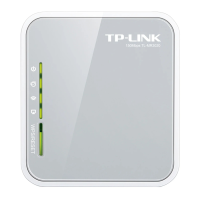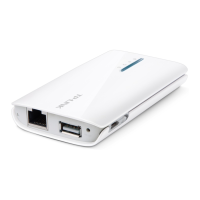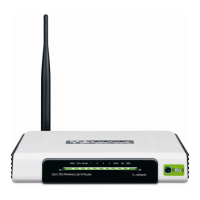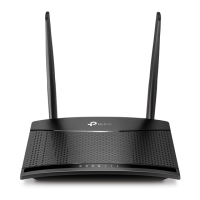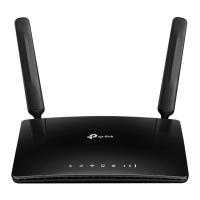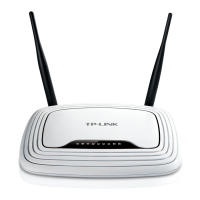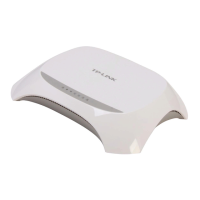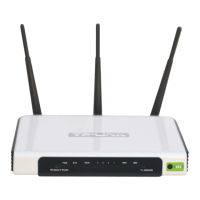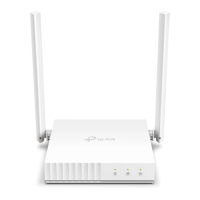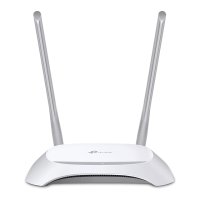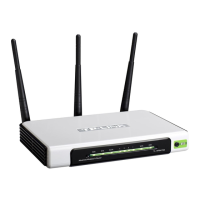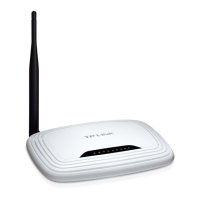Do you have a question about the TP-Link TL-MR3420 and is the answer not in the manual?
Provides a general overview of the TP-LINK 3G/3.75G Wireless N Router's capabilities and benefits.
Explains the terminology and naming conventions used throughout the user guide for clarity.
Lists the key functionalities and technical specifications of the wireless N router.
Describes the physical layout of the router's front and rear panels, including ports and indicators.
Outlines the necessary hardware, software, and internet access required for router setup.
Specifies optimal conditions for router placement to ensure proper operation and longevity.
Provides step-by-step instructions for physically connecting the router to the network and power.
Guides users through configuring TCP/IP settings for PC connection to the router.
Walks users through the initial setup process using the router's web-based utility.
Explains how to access and log into the router's web management interface.
Describes how to view the router's current operational status and network information.
Provides a streamlined process for initial router configuration.
Details how to quickly and securely connect wireless devices using the QSS function.
Covers settings for Internet access, 3G connection, WAN, MAC cloning, and LAN.
Covers all wireless network configurations including basic, security, MAC filtering, and advanced options.
Manages the router's DHCP server settings for automatic IP address assignment.
Manages port forwarding rules for exposing services on the LAN to the internet.
Covers various security features including basic, advanced, local, and remote management.
Allows setting internet access restrictions and time limits for child devices.
Manages rules for controlling network access based on hosts, targets, and schedules.
Configures static routes for directing network traffic to specific destinations.
Manages bandwidth allocation and limits for network traffic.
Binds IP addresses to MAC addresses to prevent unauthorized devices from accessing the network.
Configures Dynamic DNS services for remote access using a domain name.
Provides access to essential system utilities like time settings, diagnostics, and firmware upgrades.
Guides ADSL users on configuring the router for internet access.
Guides Ethernet users on configuring the router for internet access.
Instructions on how to configure the router for Netmeeting use.
Steps to set up a WEB server on the local network with the router.
Troubleshooting guide for when wireless stations cannot connect to the router.
Step-by-step guide for installing TCP/IP components on Windows XP PCs.
| Ethernet LAN | Yes |
|---|---|
| Networking standards | IEEE 802.11b, IEEE 802.11g, IEEE 802.11n, IEEE 802.3u |
| Receiver sensitivity | 270M: -68dBm@10% PER, 130M: -68dBm@10% PER, 108M: -68dBm@10% PER, 54M: -68dBm@10% PER, 11M: -85dBm@8% PER, 6M: -88dBm@10% PER, 1M: -90dBm@8% PER |
| Ethernet LAN data rates | 10, 100 Mbit/s |
| Ethernet LAN interface type | Fast Ethernet |
| Number of guest networks (2.4 GHz) | 1 |
| Bandwidth | 2.4 GHz |
| Interface | USB 2.0 |
| xDSL connection | No |
| Dimensions (WxDxH) | 174 x 111 x 30 mm |
| Power requirements | 9VDC / 0.85A |
| Transmit power | 20 dBmW |
| Antennas quantity | 2 |
| Antenna gain level (max) | 3 dBi |
| Web-based management | - |
| USB 2.0 ports quantity | USB 2.0 ports have a data transmission speed of 480 Mbps, and are backwards compatible with USB 1.1 ports. You can connect all kinds of peripheral devices to them. |
| Ethernet LAN (RJ-45) ports | 4 |
| Product type | Tabletop router |
| Product color | Black, White |
| Modulation | 16-QAM, 64-QAM, CCK, DBPSK, DQPSK, OFDM |
| Wi-Fi band | Single-band (2.4 GHz) |
| Wi-Fi standards | 802.11b, 802.11g, Wi-Fi 4 (802.11n) |
| Top Wi-Fi standard | Wi-Fi 4 (802.11n) |
| WLAN data transfer rate (max) | 300 Mbit/s |
| Storage temperature (T-T) | -40 - 70 °C |
| Operating temperature (T-T) | 0 - 40 °C |
| Storage relative humidity (H-H) | 5 - 95 % |
| Operating relative humidity (H-H) | 10 - 90 % |
| WAN connection type | RJ-45 |
| Package depth | 240 mm |
| Package width | 315 mm |
| Package height | 70 mm |
| Package weight | 660 g |
| Cables included | LAN (RJ-45) |
| Output current | 1 A |
| Output voltage | 12 V |
| Power source type | DC |
| Depth | 138.2 mm |
|---|---|
| Width | 203.8 mm |
| Height | 44 mm |
| Weight | - g |
